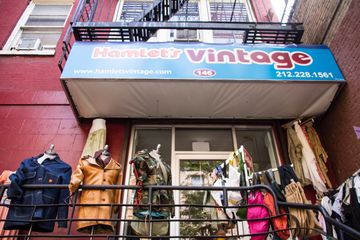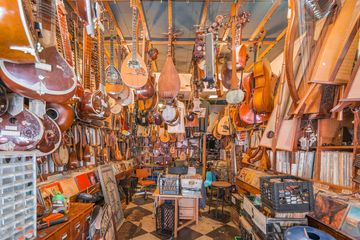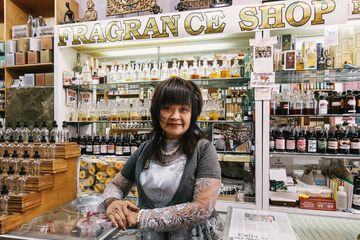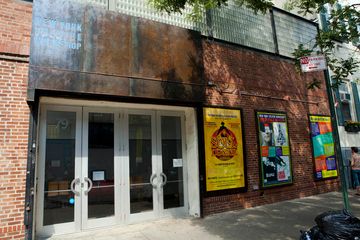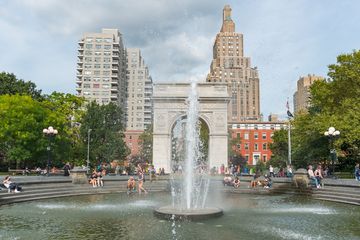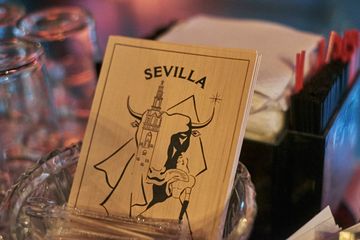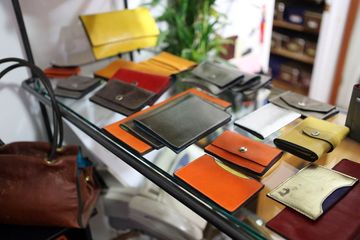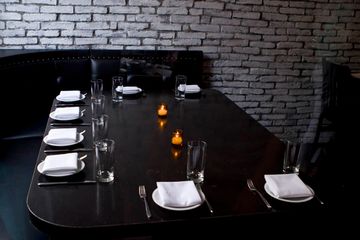Walking the 30 blocks that make up 4th Street (which starts at Avenue D and curves up to end at 13th Street — see our note for an explanation of this anomaly) is a crash course in Manhattan’s not-so-distant bohemian past. Since the 1950s, 4th Street has been an enclave for artists and writers unafraid to push the envelope with their bold and radical ideas.

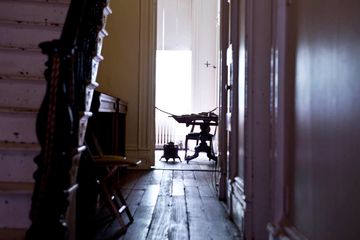
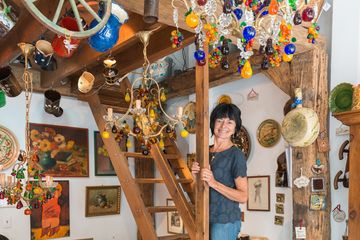
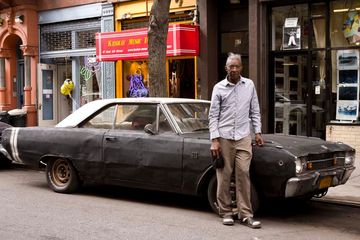
The four neighborhoods through which this street passes — the Lower East Side and the East, Greenwich, and West Villages — have histories rich with an independent spirit that is still evident today. This is the birthplace of the Nuyorican literary movement, punk rock, LGBTQ rights, the Beat Generation, two progressive churches prominent in anti-war activism (Washington Square Methodist Church and Judson Memorial Church) and Fourth Arts Block (FAB) — Manhattan’s only cultural district.
FAB is home to art in all its forms. Stretching only a short distance between Second Avenue and the Bowery, East 4th's cultural district has a multitude of theaters. Each has its own personality, with spaces dedicated to American and Latino heritages, women- and transgender-led productions, dance studios, teen projects and independent films. FAB is a must-visit destination — a commingling of art, passion, and people.
The Merchant’s House Museum is a perfectly preserved 19th-century home that was built for the wealthy Tredwell family in 1832. Seabury Tredwell, along with his wife, six daughters, and two sons, resided on 4th Street for nearly one hundred years until Gertrude, the youngest, died in 1933. Today the Federal-style building that still houses many of their possessions is a national historic landmark.
Once a drug-infested square where few would dare venture, Washington Square Park is now a vibrant space with a natural appeal that invites chess enthusiasts, children, dogs and a hodgepodge of live performers. Although named for George Washington, the park is perhaps best known for its 120-year-old arch modeled after Paris’s Arc de Triomphe. A towering water fountain welcomes playful children on hot summer days and is a favorite gathering place well into the night for NYU students, tourists and locals alike. It has borne witness to countless community advocacy efforts, including LGBTQ rights and peaceful Black Lives Matter protests.
4th Street also hosts plenty of music shops and concert venues, as well as an endless array of international food. No matter what neighborhood you find yourself strolling through, the variety of goods, services and entertainment will make sidewinding 4th Street a truly fascinating experience.
Of course, there is much dispute about the neighborhood boundaries that 4th Street passes through. The Lower East Side begins at Avenue D and ends at Avenue A. This area is also known as Loisaida, coined by the Spanish-speaking population that entered the area in the 1970s. The East Village is the area west of Tompkins Square Park to Broadway, where Greenwich Village begins. Finally, Greenwich Village becomes the West Village at Sixth Avenue until it ends at 13th Street. The next time you are randomly quizzed on the confusing geography of 4th Street, you will be ready. You’re welcome!
Side Note: West 4th Street is the only side street in Manhattan that, for a short distance between 6th Avenue and 13th Street, runs north to south instead of east to west. It is also the only side street that intersects with four other side streets: 10th, 11th, 12th and 13th.
